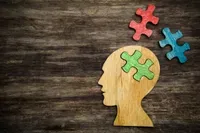Positive Clinical Psychology - Part I
.webp)
by: Matthew Jacofsky, Psy. D.
Why Survive When You Can Thrive
by: Matthew Jacofsky, Psy. D.
When you think of psychology what is the first thing that comes to your mind? If you are like most people it is probably something along the lines of helping others who struggle with daily life problems or perhaps suffer from some sort of mental illness. This is no surprise since when it comes to helping others the field of psychology has and remains on the forefront of this battle. However, what may surprise you is that psychology’s main goals have NOT always been the relief of suffering. In fact, although psychology has become synonymous with eliminating the negative its original aims were actually heavily focused on fostering the positive and ensuring ALL people experience happy, meaningful, and fulfilling lives. To illustrate, prior to World War II, psychology’s main goals were to relieve the struggles of the suffering, teach people how to lead happy and healthy lives, and to identify and promote talent and genius. However, after the war two significant events took place that would have long lasting ramifications for the field of psychology.
First, with the return of the soldiers from the war the need for relieving suffering became paramount. With this came the corresponding need for trained professionals to meet this call. That being said, psychologists now realized that they could earn a living treating disorder. This resulted in a heightened focus on this aspect of the field. In addition, with the establishment of the National Institute of Mental Health funding resources became available for the research of mental illness unlike the likes that had ever been seen before. Taken together, these events led to the subfield of clinical psychology taking a prime position in the overall field of psychology. This development has no doubt benefited many individuals and their love ones. However, with such a focus on what is “wrong” with people, as opposed to what is “right,” the other missions of psychology found themselves on the verge of extinction.
Presently, there is a growing interest in rediscovering the “lost” missions of psychology, as well as expanding and redefining the scope of clinical psychology as it has been traditionally practiced and understood by both the public and professionals. Psychology is more about correcting what is wrong in individuals and society. It is also about some of the most important questions in life such as “What makes my life worth living?” “What will make me happy?” “Does money really buy happiness?” “I have all the success in the world, why do I still feel so empty?”
As the field of clinical psychology continues to evolve it is accumulating a thorough and impressive scientific knowledge base that is leading professionals to offer more and more scientifically backed suggestions for how to lead a happy, healthy, meaningful, and successful life. By expanding our notion of how psychology is traditionally practiced psychologists are now embracing the notion that just relieving suffering, although no small feat, is simply not enough. As it has often been quoted “psychology as it is currently practiced will enable us to help people go from -4 to 0, but not to a +2 or 6.” Simply, stated, psychology can help us survive, but can it help us thrive?
The following entry is Part 1 of a series on Positive Clinical Psychology. To read Part 2, click here.
More Blog Posts
.webp)
Do We Really Know What We Look Like? ~ Fugen Neziroglu Ph.D.
.webp)
Participating in Life

Keeping The Coronavirus in Mind

You can experience life again. Let’s take steps together.
At Bio Behavioral Institute, we’re here to be your team and get you back to the life you deserve. Schedule your consultation and take the first step towards a more meaningful life.
Call our office at 516-487-7116 or complete the form to schedule your consultation.
